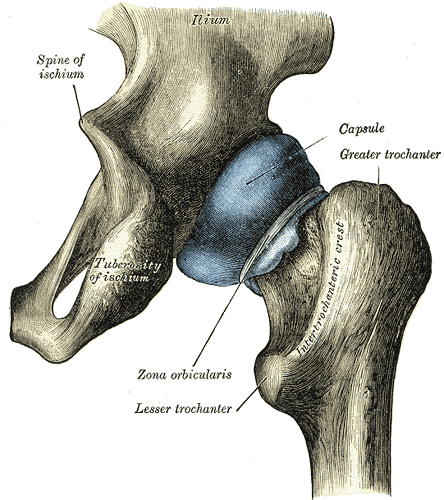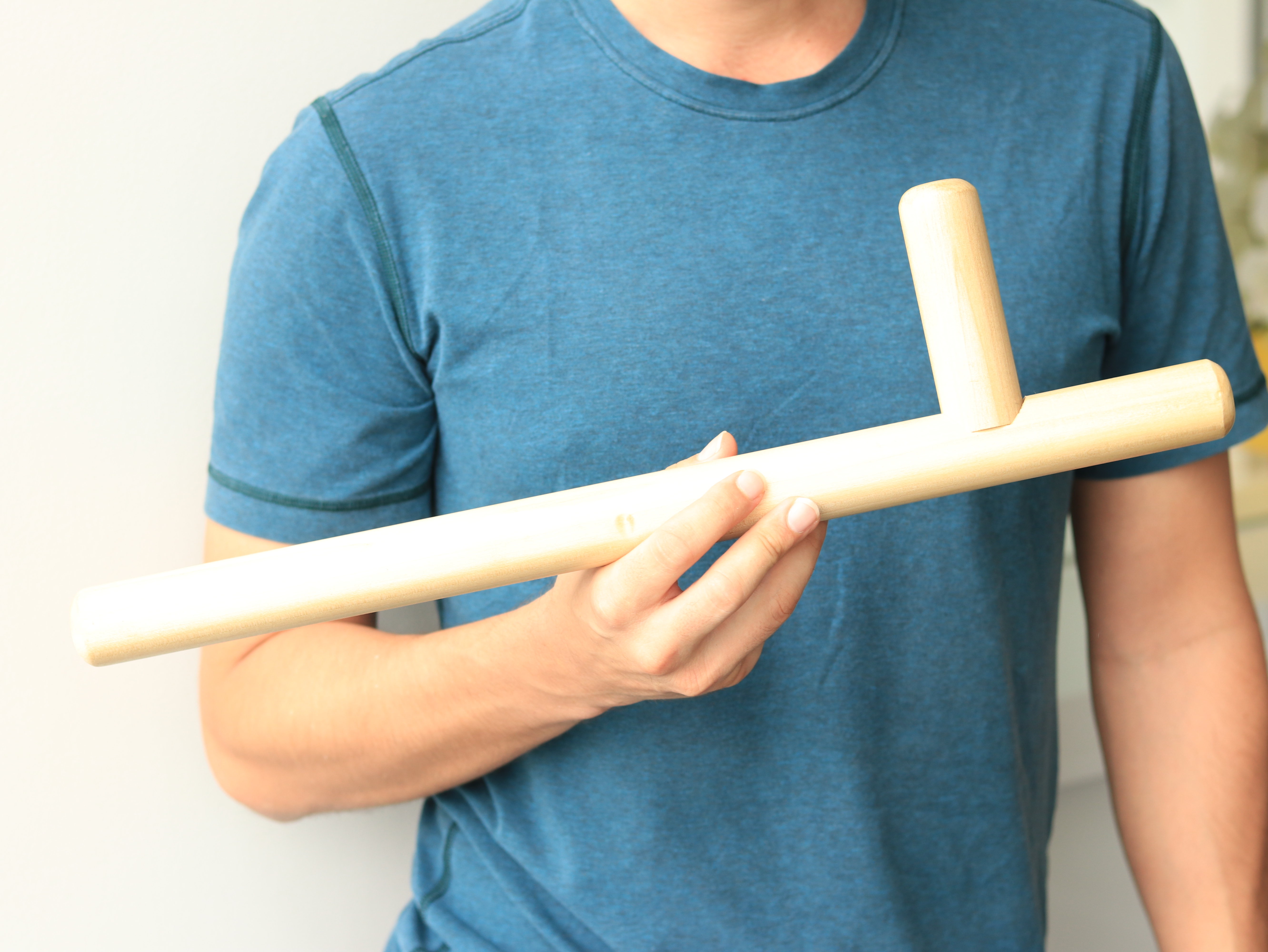HIP INTERNAL ROTATION: Best Exercises 2020
 By Shane Dowd , CES, CMP
By Shane Dowd , CES, CMP
Hip internal rotation (IR) is a big deal. You need it to lift heavy weights and perform normal activities like squatting, bending, twisting, walking, and running.
I created a previous video on this topic that you can watch here.
Now it's time for an update and review of some of the best exercises for hip internal rotation in 2020.
How Much Hip Internal Rotation is "Normal"?
The "healthy" range in IR is 30/45° – while most stiff (hypomobile) people who come to me for "hip help" have closer to 5-10 degrees.
While there seems to be a correlation between hip pain and lack of hip IR, this isn't guaranteed. You can also be hypermobile (young gymnast for example) and still have hip pain. But, for the purposes of this article, we will focus on the stiff/tight (hypomobile) person.
Lack of hip IR isn't a death sentence. I started out with almost zero hip IR and now have about 35 degrees. Is it stubborn and difficult to improve? Yes, for some people. But, you can improve a lot.
So what to do?
The stuff you can’t control – bony anatomy
The shape, size, and orientation of your femur (ball) and acetabulum (socket) are mostly out of your control. Of course morphology (pincer, cam, mixed), alpha angle, retroversion/anteversion, etc are all factors – but not easy fixes.
There are surgeries that are SOLD as "quick, easy and 100% guaranteed", but if you dig a little deeper - buyer beware!

Really? You can just cut me open and shave my bones and it's guaranteed with no complications? Do a review of the scientific research or read the self-reports on internet forums. Scared about surgery after that? Yeah, me too.
Don't get me wrong – surgery is helpful for some. It may even be necessary for some. I know people who got it and benefitted. However, It should never be the first choice. There are cheaper, less invasive, less risky options to exhaust first.
Just to be crystal clear (because I get this question a lot...)
"Are you saying that morphology, alpha angle, retroversion/anteversion, etc don't matter?"
NOPE! I'm saying that most people place 90% of importance on the factors they CAN'T control and 10% importance on the factors they CAN control.
Time to flip-flop that equation!
The stuff you can control - muscles, movement & motor control.
Although we can’t change bony anatomy, we can influence the position of it.
How?
- Motor control
- Exercise selection
- Hip capsule restrictions
- Muscle density and extensibility
- Lifestyle & psychosomatic factors
In this 2016 video, I discuss tissue density and extensibility and hip capsule restrictions. However, there is a new tool and new exercise that makes a huge difference in hip IR.
The Hip Stick – the missing puzzle piece for your hips
I created this tool out of personal necessity. My adductor/hamstring attachment area was always "gunked up" (myofascial restrictions/scar tissue). I needed a way to massage it more effectively, so I created this tool.
Because of its shape, size, and maneuverability - it gets into your adductors better than other mobility tools. In my experience, there is no more effective way to free your adductors than this.
When you free these attachments way up by the hip joint, you can unlock lots of hip internal rotation.
Watch the video above for a demonstration on how to use it.
The Hip Capsule - joint centration for the win!

Even though I covered the hip capsule mobilization in a previous video it needs repeating. The hip capsule is so important because whatever is nearest the joint restricts range of motion the most. When you free the hip capsule you get a lot of quick mobility gains.
When you cement those gains in with stretching, massage, and good movement - you win!
Anterior Pelvic Tilt & Motor Control Mastery

Lastly, let's talk about motor control.
Many people understand the following concept intellectually, but very few people have truly mastered it as their normal pelvic position and as a skill.
The amount of pelvic tilt during life and exercise will massively affect how much IR is available in the hip.
More anterior pelvic tilt (APT) = Less internal rotation (IR)!
With APT, the roof of the acetabulum covers more of the femur and limits hip flexion and hip rotation.
It's basically a kill switch for hip mobility!
Want to completely shut down the range of motion of your hip? Spend most of your life in APT!
Wanna know something else interesting? Research shows that those with femoral acetabular impingement (FAI) use less posterior pelvic tilt during hip-flexion exercises (squats, for example).
In plain English, this means they are doing the opposite of what would help them!
This isn't just "motor morons" either. Even skilled physical therapists and trainers I've worked with need help here. Learning how to maintain neutral pelvis during complex movements is hard! I used to be in the same boat. The good news is, this is something that you can improve.
WARNING: too much posterior pelvic tilt (PPT) can be just as harmful as too much APT.
For example; heavy squats and deadlifts with PPT = back injury.
With that said, moving from APT to a truly neutral spine is a good thing. Also, many exercises have minimal spinal load (dead bugs, planks, etc.) In these cases, a little extra PPT doesn't hurt.
Most people with long term FAI / hip pain don't even know how to get into PPT. This is why I use the specific "core progressions" in the video above. They move from simple to complex to most complex (multi-joint movements like squats & deadlifts.)
The progression goes:
- Single leg deadbug
- Double leg deadbug
- Hollow body lowers
- Hollow body rocks
- Squats & deadlifts and full body movements
In The Hip Fix Program , we have exercises that help gain pelvic control mastery in 3 planes, not only the sagittal plane as described above.
Summary: The Hip IR Freedom Formula:
Lack of hip IR is neither a death sentence nor an easy fix. Most likely you can improve what you've got. You may not go from 0° to 45° of IR in 30 days, but we've seen some pretty radical improvements in ourselves and our clients.
Here's the formula: Free your tissues + gain full range + strengthen that range + free the hip capsule + master pelvic tilt + master basic movement patterns (bending/squatting) + don't live a crappy lifestyle of being stuck in APT.
Simple? Well, not exactly. But it's a start. That's why we made a comprehensive, proven system that's been helping people all over the world since 2015. Check it out below.
About The Author

Shane Dowd, CES, CMP is the owner / founder of GotROM.com. He is also a sports performance & mobility coach specializing in injury prevention and flexibility for athletes.











